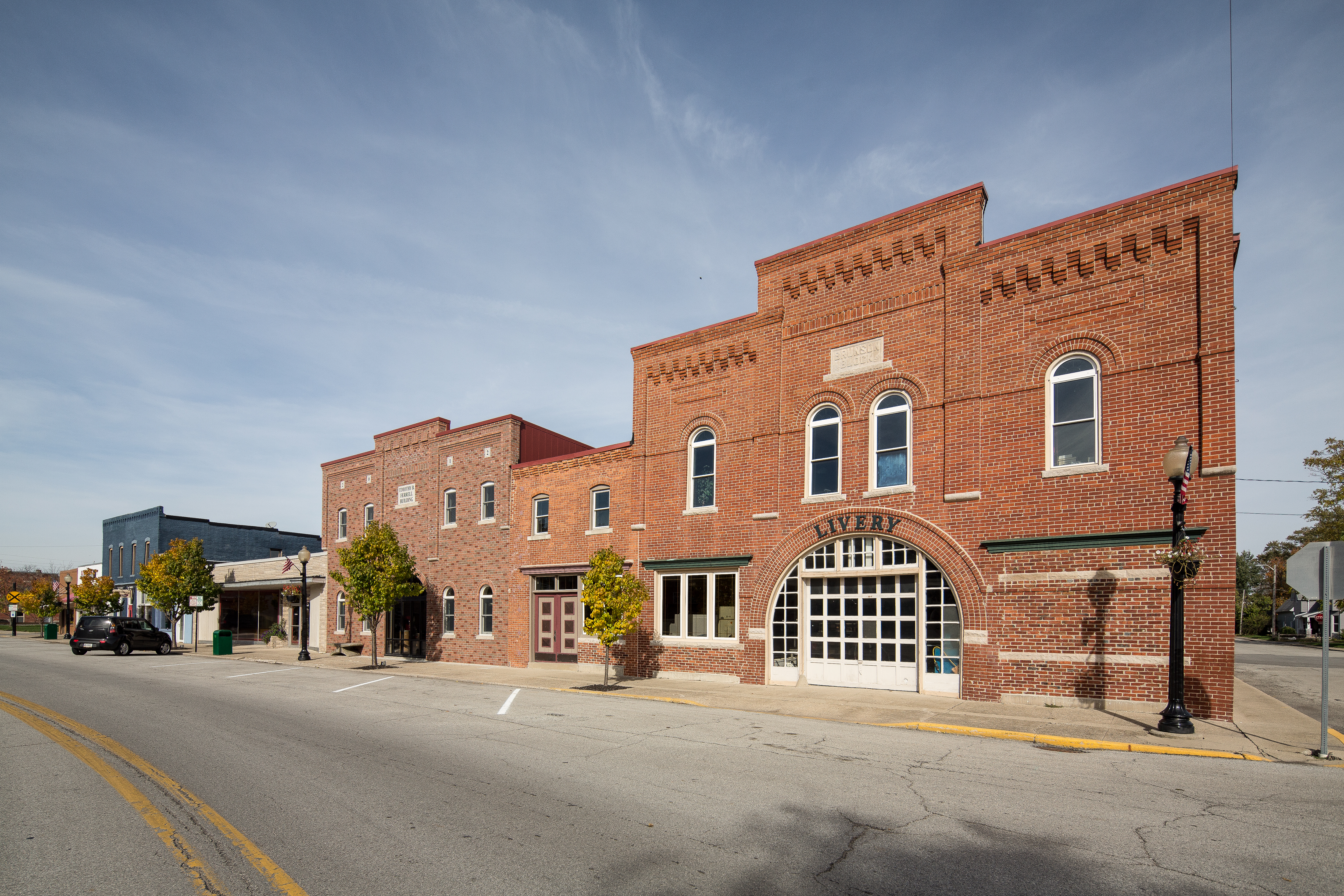Moving to Fortville with kids? You’ve chosen well. Communities like Northwest Fortville by Ryan Homes, Mt. Vernon North by D.R. Horton, and Lennar’s offerings throughout the area deliver spacious floor plans, great school districts, and neighborhoods where children actually play outside. But once you’ve closed on that Ryan “Hudson” plan or D.R. Horton “Chatham,” reality sets in. Builder-grade finishes weren’t designed for soccer cleats, art projects, and the beautiful chaos of family life.
Smart families turn great bones into homes that handle real life without sacrificing style. The upgrades that matter aren’t about impressing guests, they’re about creating spaces that work when backpacks pile up in the mudroom, when homework spreads across the kitchen island, and when tray ceilings in the primary suite need wall treatments that don’t compete with the architecture. These eight builder-grade upgrades help Fortville families live comfortably in homes that still look custom.
From wipeable wall panels that survive fingerprints to mudroom lockers sized for actual sports gear, these changes turn a standard new construction home into a family-proof sanctuary that grows with your household instead of showing every scuff.
Wipeable Wall Panels in Entries That Handle Traffic
Fortville entries see serious action. Between Mt. Vernon school runs, sports practices at Fortville Memorial Park, and weekend trips to Taxman Brewing, your front hall takes a beating. Standard drywall with builder-grade paint shows every handprint, scuff, and smudge within weeks of move-in.
Wipeable wall panels solve this without sacrificing style. Board-and-batten treatments installed 3–4 feet high create a protective zone where kids naturally touch walls. The key is using semi-gloss or satin paint that cleans easily, paired with quality primer that prevents stains from soaking into the wood. When panels are installed properly, they look intentional rather than utilitarian—like custom millwork rather than damage control.
These panels work especially well in Ryan Homes’ open-concept entries, where the foyer flows directly into living spaces. Instead of a blank drywall transition that shows every mark, textured panels create visual interest while providing a practical buffer zone. D.R. Horton homes with side-entry garages benefit from similar treatments, where mudroom walls meet heavy traffic from sports equipment and daily gear.
The bonus comes during cleaning. Instead of touching up paint constantly, wipeable panels clean with standard household cleaners. Your entry maintains its fresh appearance even when life gets messy, keeping the home’s first impression positive for both family and guests.
Mudroom Lockers Sized for Backpacks and Sports Gear
Builder mudrooms often feature wire shelving that works in magazines but fails in real family life. Elementary backpacks don’t hang neatly on single hooks, soccer cleats need ventilation, and sports equipment requires actual storage rather than display space. Custom lockers change mudrooms from dumping grounds into organized transition zones.
The sizing matters tremendously. Standard lockers designed for elementary gear need different proportions than those handling high school athletics. Fortville families dealing with Mt. Vernon school schedules need cubbies wide enough for instrument cases, deep enough for sports bags, and tall enough for hanging winter coats. Each family member gets dedicated space—no more fighting over hooks or tripping over gear.
Installation timing works best immediately after closing, before family routines solidify around inadequate storage. Lennar homes with smaller mudroom footprints benefit from vertical designs with overhead storage for seasonal items. Ryan Homes’ larger mudroom layouts can handle bench seating with underneath storage, plus individual tower lockers for each child. D.R. Horton plans often include powder rooms adjacent to mudrooms, making wall-mounted solutions the smart choice to preserve floor space.
These lockers integrate with the home’s trim package, so they feel built-in rather than added later. When guests enter through your garage, they see organized storage that reflects the quality of your home rather than chaos that suggests you’re still moving in.
Built-In Desk Niches Off the Kitchen for Homework Central
Kitchen homework stations became essential during remote learning and remain valuable for busy families. But most builders either skip them entirely or include tiny desk areas that don’t function for actual homework needs. Custom built-in niches create dedicated workspace without sacrificing kitchen flow.
Location determines success. The ideal homework niche sits adjacent to the kitchen but slightly removed from cooking chaos. This allows supervision while preventing homework from spreading across dinner prep areas. Ryan Homes’ open-concept designs often include perfect alcoves near pantries or breakfast areas. D.R. Horton floor plans with butler’s pantries can incorporate desk space within the pantry design. Lennar layouts frequently offer opportunities along breakfast room walls.
Proper sizing accommodates real homework needs. The desk surface needs at least 24 inches of depth and 48 inches of width for spread-out projects. Overhead storage holds school supplies, while file drawers manage paperwork and graded assignments. Electrical planning includes outlets for laptops, phone charging, and task lighting. Built-in charging stations prevent cords from cluttering the workspace.
These niches work because they establish homework boundaries. Children have designated space that doesn’t interfere with meal prep, while parents can monitor progress from the kitchen. The integration feels intentional rather than carved out of existing space, maintaining the home’s design integrity while serving practical family needs.
Primary Wall Treatments That Don’t Fight Tray Ceilings
Many Fortville builders include tray ceilings in primary suites, but then leave walls completely blank. This creates an awkward balance where the ceiling has detail but walls remain flat. Smart wall treatments complement tray ceilings rather than competing with them, creating cohesive luxury that feels intentional.
Horizontal board treatments work beautifully with tray ceiling architecture. Installing shiplap or similar planking behind the bed creates texture at eye level while allowing the tray ceiling to remain the room’s dominant feature. The horizontal lines echo the ceiling’s layered design without fighting for attention. Paint color coordination ties the elements together—perhaps matching the tray ceiling’s accent color in the wall treatment.
Applied molding systems offer more formal approaches. Picture-frame panels sized proportionally to the ceiling’s dimensions create rhythm between wall and ceiling details. These work especially well in larger Ryan Homes primary suites where wall space feels endless without intervention. D.R. Horton rooms with deeper tray ceilings can handle more substantial molding profiles.
The key lies in restraint. Tray ceilings already provide architectural interest, so wall treatments should support rather than overwhelm. Simple approaches often work best—clean lines that acknowledge the ceiling’s presence while adding warmth and texture to the walls below.
Durable Flooring Upgrades That Handle Family Traffic
Builder-grade carpet in Fortville homes looks fresh initially but shows wear quickly under family traffic. Between muddy shoes from Flat Fork Creek Park visits and pet accidents from new puppies, standard carpet rarely survives the first year looking good. Smart flooring upgrades prioritize durability without sacrificing comfort.
Luxury vinyl plank (LVP) has become the family-friendly choice for good reason. Modern LVP looks convincingly like hardwood but handles moisture, scratches, and impacts that would damage real wood. Installation over existing subfloors makes it perfect for post-closing upgrades. Color choices range from light oak tones that brighten Ryan Homes’ sometimes darker spaces to rich walnut shades that complement D.R. Horton’s more traditional finishes.
Engineered hardwood offers compromise between durability and luxury. The real wood surface provides authentic appearance and feel, while the engineered construction resists moisture better than solid hardwood. This works well in Lennar homes where HVAC systems maintain consistent humidity, reducing expansion and contraction issues.
Strategic carpet retention makes sense in certain areas. Primary bedrooms benefit from carpet’s warmth and sound absorption, while high-traffic areas get hard surfaces. This approach balances comfort with practicality, ensuring floors look good years after installation rather than months.
Kitchen Cabinet Hardware That Survives Daily Use
Builder-grade cabinet hardware fails quickly under family use. Thin pulls break when yanked by hurried children, basic hinges sag under weight, and drawer slides stick after months of use. Upgrading hardware immediately after closing prevents these problems while adding custom touches.
Soft-close hinges and drawer slides should be the first priority. Children slam cabinets naturally, and soft-close mechanisms protect both the cabinet boxes and the hardware itself. Quality slides support heavier loads without binding, essential when kitchen drawers hold everything from dishes to homework supplies. Installation requires precision, so professional installation usually pays for itself in longevity.
Pull and knob selection balances style with durability. Solid brass or stainless steel hardware withstands daily use better than painted or plated alternatives. Sizing matters pulls should be proportional to drawer and door sizes while providing comfortable grip for all family members. Ryan Homes’ white cabinets pair beautifully with brushed nickel or matte black hardware. D.R. Horton’s more traditional brown cabinets work well with oil-rubbed bronze or aged brass finishes.
Installation timing matters because hardware upgrades require precise drilling. Doing this work before family routines establish around the kitchen prevents disruption while ensuring the upgrade feels integrated rather than retrofitted.
Bathroom Storage That Grows With Children
Builder bathrooms include basic vanities and medicine cabinets that don’t adapt as children grow. Toddler bath toys have different storage needs than teenage skincare routines, and most builder solutions handle neither well. Custom storage upgrades create flexibility that adapts to changing family needs.
Medicine cabinet replacements offer immediate impact. Larger cabinets with adjustable shelves accommodate different bottle sizes and product quantities. Interior electrical for LED lighting improves visibility while outlet strips allow for electric toothbrush charging. These cabinets often install in existing openings without wall modifications.
Vanity additions maximize available space. Installing pull-out drawers in existing cabinet bases improves access to stored items. Under-sink storage solutions work around plumbing while organizing cleaning supplies safely away from children. D.R. Horton’s larger primary bathrooms can accommodate additional storage towers between vanities and bathtubs.
Hall bathroom modifications serve growing families better. Adding hooks at multiple heights accommodates different family members. Combination towel bars and shelves provide storage without requiring additional wall space. These small changes prevent bathroom chaos while maintaining the clean lines builders established.
Basement Finishing That Actually Gets Used
Many Fortville builders include partially finished basements, but these spaces often feel disconnected from family life. Smart finishing touches turn basement areas into valuable living space that families actually use rather than store forgotten items.
Ceiling treatments make the biggest difference. Exposed joists painted white or dark colors create finished appearance without lowering ceiling height. This approach works well in Ryan Homes basements where ceiling height varies. Dropped ceiling tiles provide traditional finish but reduce headroom, better for D.R. Horton basements with generous height.
Floor covering determines usability. Concrete sealing followed by area rugs creates comfortable spaces without major expense. Luxury vinyl tile provides more finished appearance while handling basement moisture better than carpet or hardwood. Lennar basements with concrete moisture issues benefit from elevated flooring systems that allow air circulation.
Lighting upgrades transform basement ambiance. Recessed lighting eliminates dark corners while track systems provide flexible illumination for changing uses. Under-stair lighting improves safety while adding architectural interest. These electrical upgrades work best during other finishing projects to minimize drywall repair.
Why These Upgrades Work for Fortville Families
Fortville attracts families seeking space, value, and community but builder finishes often prioritize cost over durability. These eight upgrades bridge that gap, creating homes that handle real family life while maintaining the style that drew you to the community initially.
The timing of these improvements matters as much as the upgrades themselves. Installing wipeable panels, mudroom lockers, and durable flooring immediately after closing prevents damage while establishing organized family routines. Kitchen and bathroom improvements work best before daily patterns solidify around inadequate storage.
Most importantly, these upgrades grow with your family rather than requiring replacement as children age. Mudroom lockers accommodate changing gear, built-in desks handle evolving homework needs, and durable surfaces maintain appearance through all stages of family life.
Request Your Fortville “Family-Proof” Package Quote
At Radford Woodworks, we understand that Fortville families need homes that work as hard as they do. Whether you’ve purchased from Ryan Homes, Lennar, D.R. Horton, or any other local builder, we create upgrades that survive real life while maintaining custom appearance.
Ready to see how these upgrades can transform your new home? Request a quote for our Fortville “family-proof” package by calling (317) 739-8555 or visiting radfordwoodworks.com/contact.
Your builder gave you great bones. Let us add the details that make it truly livable.






